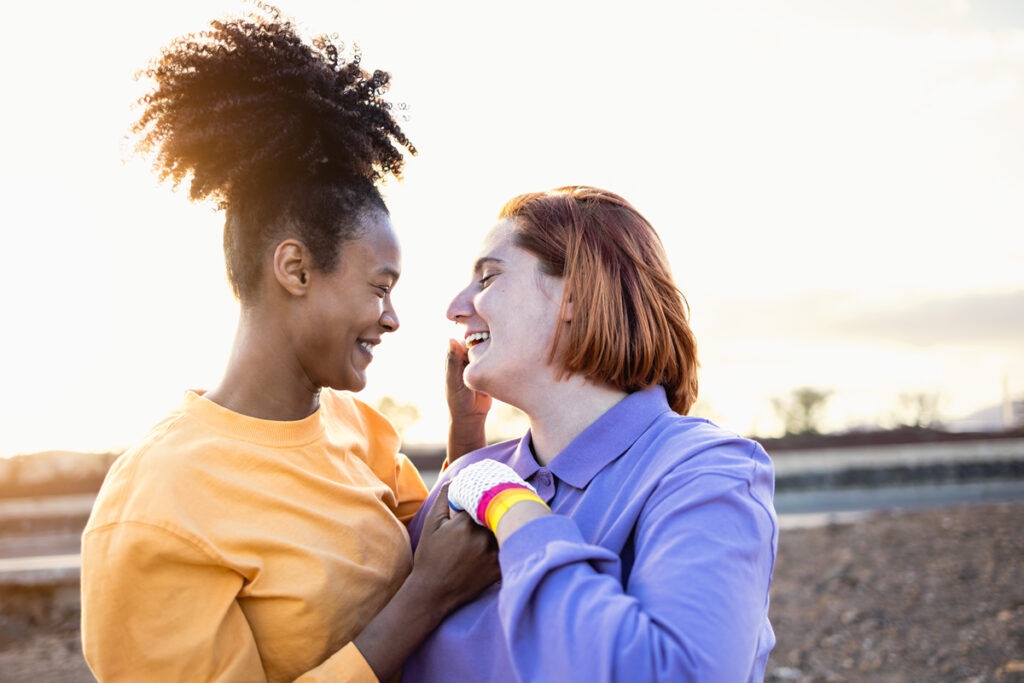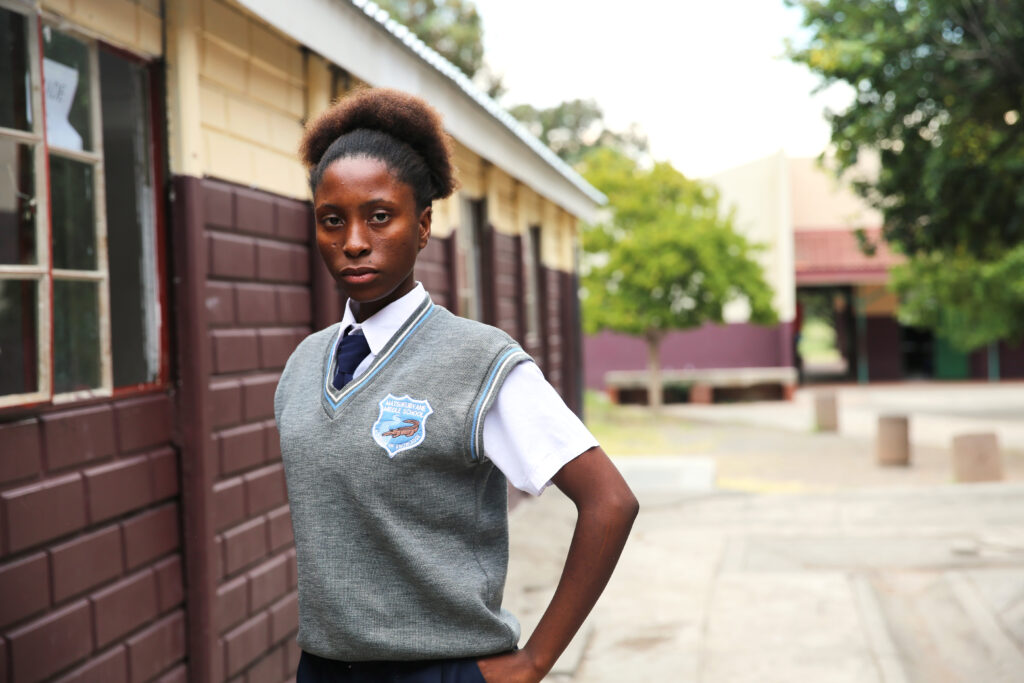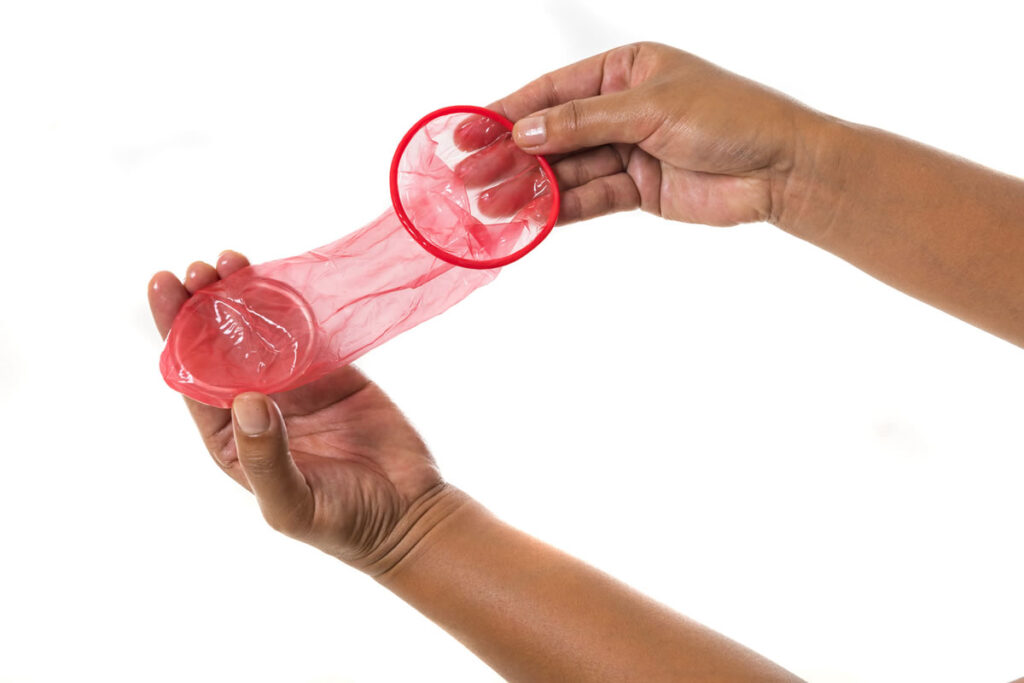- One of the world’s biggest sexual health education organisations has introduced the concept of pleasure into sexual and reproductive health and rights to Africa.
- A digital campaign — which featured a South African influencer Thando Hlophe — is run by the International Planned Parenthood Federation in Africa. It uses a sex-positive approach to educate on taboo topics such as penis hygiene, the benefits of sex and consent.
- A review of the campaign found that it increased condom use and encouraged people to access health services.
In the village in Kenya where Swiry Nyar Kano (not her real name) grew up, sex and diversity weren’t talked about much.
The topics didn’t come up in conversation with her parents, and at school she was taught about human anatomy and “sexual immorality”, and told that homosexuality was a sin.
“I grew up in society where sex was about having babies and that was about it,” says the social media influencer. “Sexuality was never mentioned. Nobody ever talked about it so I started seeking answers for myself.”
She read books, and researched sexual traditions in Africa, and then made three TikTok videos about what she had learned for her 1-million followers, as well as an Instagram post. Together, these have been viewed more than 130 000 times and generated hundreds of comments.
Swiry’s work was part of a wider campaign to introduce the concept of pleasure into sexual and reproductive health and rights in Africa, run by the International Planned Parenthood Federation (IPPF), one of the biggest providers of sex education globally.
Its digital campaign Treasure Your Pleasure was aimed at young adults and ran in three languages (French, Portuguese and English) from March to November over TikTok, Instagram, Facebook and Twitter. It featured videos from influencers from all over Africa, Twitter chats, and pop art-style graphics with sex-positive messaging posted on its Instagram page.
[WATCH] Rating the types of lesbian sex I’ve had
As well as Swiry’s video and subsequent blog, there was a post about a South African influencer’s top lesbian sex acts; another about the physical and mental benefits of having sex; several about consent; and one about penis hygiene, among other topics.
The campaign reached 9-million people and added 40 000 new followers to IPPF Africa digital platforms. It drove 330 000 people to the campaign’s landing page on the IPPF website, which features a quiz, downloadable stickers for use on social media and evidence-based research. The IPPF regional office in Asia now hopes to run a similar campaign.
It was a marked departure from the usual narratives deployed in sexual health programmes. Mahmoud Garga, who led the campaign, says: “We talk about sexually transmitted infections, mortality, morbidity. We talk about HIV and unwanted pregnancies. It’s always fear-based.”
He adds: “People are always left with guilt and shame and feeling [sex] is something bad they shouldn’t be doing. It’s a taboo. We wanted to shift the narrative and do a sex-positive campaign.”
‘When you think about sex, you think about teenage pregnancy’
IPPF is one of a wave of organisations introducing the concept of pleasure to sexual and reproductive health and rights. It collaborated with the Pleasure Project, a group of activists who, on Valentine’s Day published, with the World Health Organisation, a review about the added value of incorporating pleasure into sexual health interventions. The review showed there was a significant positive effect on condom use and more people were encouraged to access health services.
Now 19 organisations around the world are using their “pleasure principles”, designed to help people embark on the journey towards a sex-positive, pleasure-based approach to sexual health; 12 are based in the global south.
[WATCH] Books & babies: How to keep young mothers in school
As well as the Treasure Your Pleasure campaign, the Pleasure Project has worked with AmplifyChange, a fund that supports civil society organisations that advocate for improved sexual and reproductive health and rights in their communities.
Among them is Young and Alive in Tanzania, which in April started hosting two-hour group sessions with 18- to 24-year-olds, encouraging them to talk about pleasure and sex in a positive way.
“For years, we’ve been taught about sex in a negative way,” says Innocent Grant, the programme director for Young and Alive. “When you think about sex, you think about teenage pregnancy, HIV and Aids, and STIs. This approach didn’t work for so long in Tanzania. We still have high rates of teenage pregnancy, we have high rates of HIV rates among young people, and gender-based violence as well. Maybe we need to change the way we do sex education.”
While it’s too early to see any real impact, Grant says so far the discussions have been lively and encourage participants to understand and speak openly about diversity, sexual preference and consent.
The Pleasure Project has also recruited 20 fellows — people around the world, from Chile to the Philippines, working on different projects around pleasure-inclusive sexual health.
The fear of female pleasure
This year is the first time that pleasure has featured in the programme of the International Family Planning conference, which took place in Thailand last week. Overall, pleasure has been featured in fewer than 1% of summaries of papers at international Aids conferences, according to an analysis by the Pleasure Project.
The tide is beginning to turn but it has been a struggle, says Anne Philpott, public health professional and founder of the Pleasure Project. She created the Pleasure Project in 2004 because of a “bubbling worry in my mind that pleasure was not being addressed in international policy forums or, in general, in sex education”.
[WATCH] Inner condoms can increase your sexual pleasure — and protect you
Not talking about arguably the key reason people have sex is making sexual and reproductive health programmes weaker and less empowering, she says. “By ignoring pleasure, we’ve made our programmes a lot less effective. Fewer lives have been saved, fewer condoms have been used.”
Philpott has had a range of reactions to her work since she started the Pleasure Project. Some people were scared, others made assumptions about her own sexuality, and some thought the programme would harm her career.
“I think people are scared that, if pleasure — particularly female pleasure — is unleashed, it will be uncontrollable. It’s like it won’t go back in the box,” she says. “There is a lot of fear around female pleasure.”
This article was originally published by The Guardian’s global development project — part of Guardian News & Media Ltd.
This article was originally published by The Guardian’s global development project — part of Guardian News & Media Ltd.
Sarah Johnson is a reporter focusing on human rights and global development.








